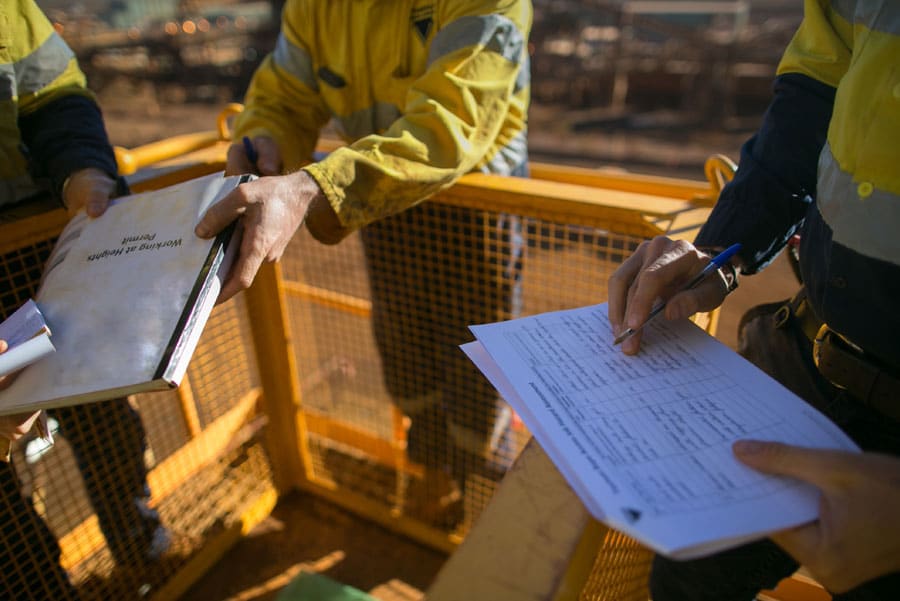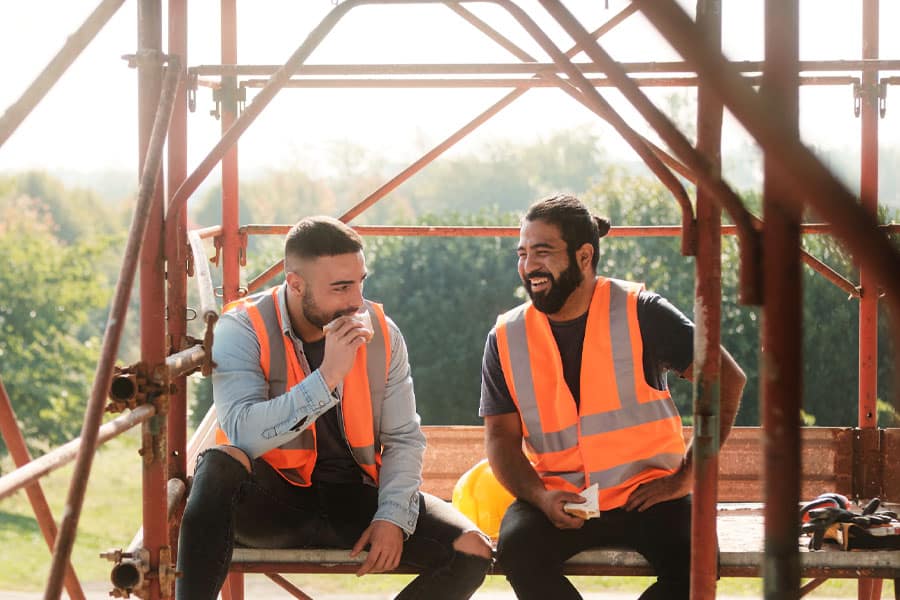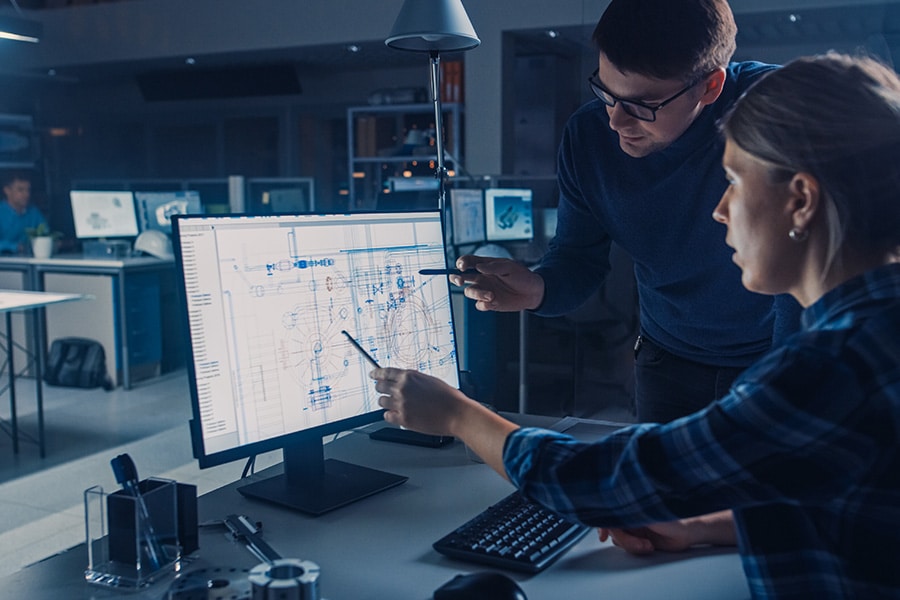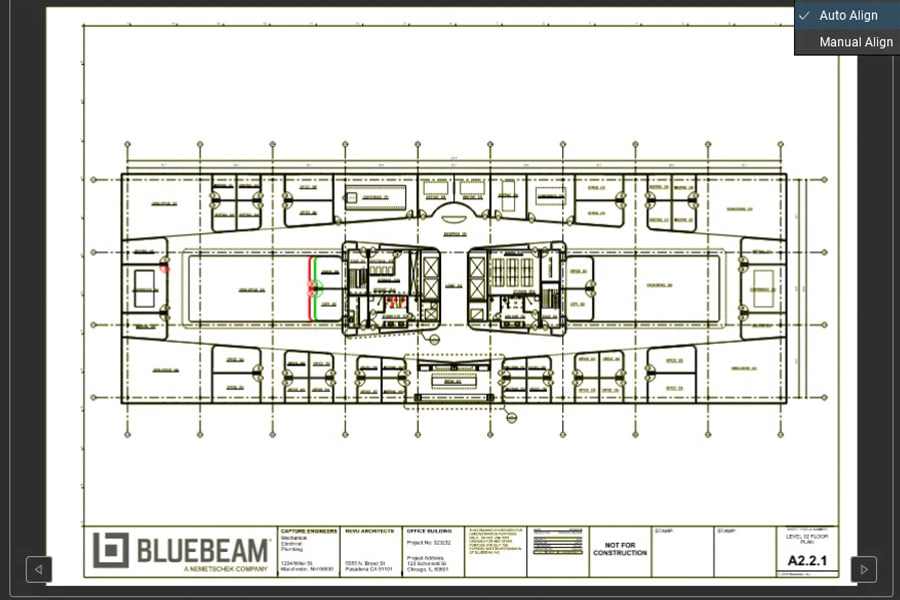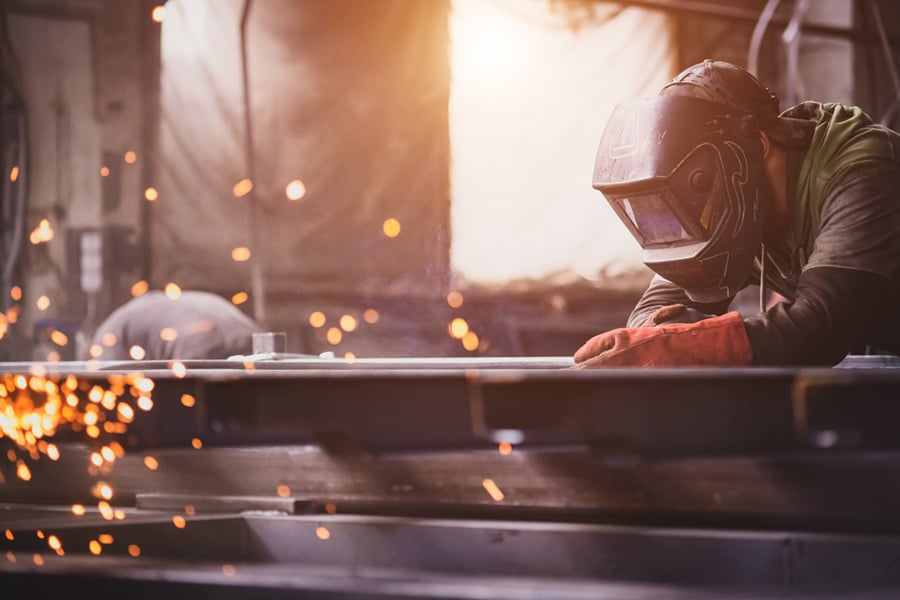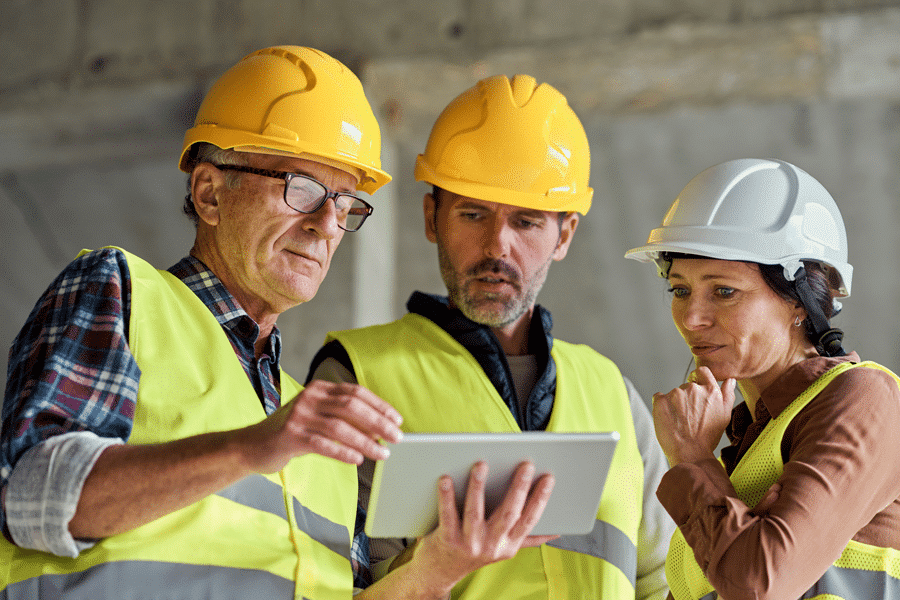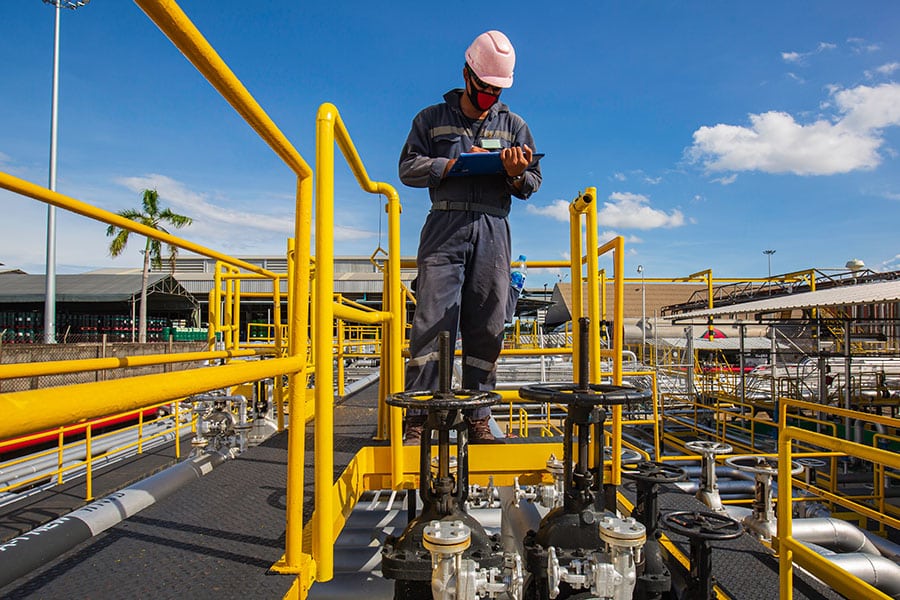The most significant risks of a fatality or life changing event on a construction worksite may seem obvious, however, a series of other underlying events may cost your people their health and wellbeing – or ultimately their lives.
Hazards across working at heights or injury through the use of vehicles or in using plant and equipment have an immediate impact on your people and your worksite. However, there are underlying aspects of construction industry that means your workers – and subcontractors interact with diverse and often more insidious risks than those across other industries.
Common risks in the construction industry
While the risks around working at height, with machinery and equipment and heavy vehicles are responsible for injuries, exposure to hazardous substances run the potential of causing lifelong health issues that as cancer.
Asbestos, paints, chemicals, dusts, fumes and gases are often evident in many construction sites, as are high noise levels.
Excessive vibration levels also present a hazard to workers – potentially disrupting the flow of oxygen levels in the body, leading to headaches or back pain and in the longer term causing nerve damage to fingers, hands and arms, leading to headaches or back pain.
Construction workers also have a high risk of developing occupational disease as a result of a range of factors including:
- Construction work exists across varied environments, including sites that may include health risks such as the existence of asbestos.
- Sites are constantly changing as projects progress with different tasks that pose a danger to people’s health.
- Workers generally are not aware of health risks, with the consequences of exposure not viewed as significant as it can take many years for serious ill health conditions to develop.
- Often with many subcontractors or casual staff, job site turnover can make it difficult to ensure all staff have the information they need to do their jobs safely.
Health risks are as important as safety risks
Risks of poor health outcomes as a result of the work environment can be managed by following some simple steps – beginning by following the same process in identifying and mitigating health risks as safety ones – through following Assess, Control and Review steps.
Failing to manage health risks within your business may result in a range of significant costs:
- Human cost: Each case of occupational disease means someone is needlessly suffering. It may also affect friends and loved ones.
- Financial cost: Failing to manage workplace health and safety can be costly as a result of lost time in productivity, the loss of key staff and potentially liability for a worker’s injury or illness.
- Reputational cost: If your business has been found to be negligent in workplace health and safety management, aside from sanctions, you will be less attractive to potential clients, workforce and business partners.
Cancer risk in the construction industry
According to the Cancer Council Australia, five common areas of cancer risk are faced by tradies every day on the job:
1. Diesel engine exhaust (DEE) emissions
More than 1.2 million Australian workers are exposed to diesel engine exhaust every year – increasing their risk of developing lung cancer, bladder cancer or other health conditions.
2. Silica dust
Silica is naturally occurring and is found in sand, stone, rock, gravel, and clay. It is used in materials like artificial stone, bricks, tiles and concrete. Cutting, grinding, drilling, or polishing generate silica dust. This dust is harmful when inhaled, and can lead to the development of silicosis, kidney disease, chronic obstructive pulmonary disease, and lung cancer. Tradies in the mining and construction industries are among those who have the greatest exposure to silica dust.
3. Asbestos
Tradies including plumbers, carpenters and electricians who work in the building and construction industry are likely to encounter asbestos at some stage. Although asbestos was banned in Australia in 2003, it can still be found in millions of homes and public and commercial buildings built prior to 2003. Breathing in asbestos fibres can increase your risk of lung cancer, mesothelioma, asbestosis, and other diseases. Always check if asbestos is present before you begin work!
4. Welding
Welding arcs emit intense ultraviolet (UV) and infrared (IR) radiation, which can cause serious eye injuries, including arc eye, cataracts, or permanent vision loss. Exposure to toxic fumes such nickel, chromium, and lead can lung diseases and cancer. Other workplace safety risks include electric shock, fire and explosion and noise exposure.
5. Wood dust
Wood dust is produced via woodworking activities including the manufacture of wood products, machine operations, and hand or machine sanding. Tradies who work with pressed wood products such as plywood, particleboard, and MDF also run the risk of formaldehyde exposure when can cause cancer of the nasal cavity, sinuses and nasopharynx, as well as leukaemia. According to the Cancer Council Australia about 16% of cancers of the nose and nasal sinuses in men could be due to wood dust exposure.
Managing risks
Managing risks in construction is an important part of keeping people safe in a dangerous environment.
This includes:
- working through the hierarchy of control measures
- creating an emergency plan and
- completing and implementing a safe work management plan (SWMS) for any high-risk construction.
A person conducting a business or undertaking (PCBU) must apply risk control measures, starting with trying to eliminate the risk first.
The hierarchy of control
A step-by-step approach to reduce or eliminate risks in the workplace, the hierarchy of control ranks risk controls from the highest level of protection and reliability through to the lowest and least reliable protection.
- Eliminate hazards and risks: highest level of protection and most effective control
- Eliminating the hazard and the risk it creates is the most effective control measure.
- Reduce the risk: Reduce the risk with one or more of the following controls:
- Substitute the risks with lesser risks
- Isolate people from the risks
- Engineering: Reduce the risks through engineering changes or changes to systems of work.
- Administrative controls: Low level of protection and less reliable control
- Use administrative actions to minimise exposure to hazards and to reduce the level of harm.
- Personal protective equipment: Lowest level of protection and least reliable control.
- Use personal protective equipment to protect people from harm. PPE may include items such as ear muffs and earplugs, goggles, respirators, face masks, hard hats, safety harnesses, high-visibility clothing, protective eyewear and safety footwear.
Safe Work Method Statements (SWMS)
Safe Work Method Statements (SWMS) are documents that outline the procedures and hazards associated with a particular task or worksite. They are used to communicate and manage risk within a workplace by providing workers with a clear understanding of the risks and safety measures that need to be implemented to perform the task in a safe and controlled manner.
Offering a structured and systematic approach to managing safety risks associated with a specific task or worksite, a SWMS aims to identify hazards and the controls that need to be implemented to ensure that workers can carry out work safely. This is particularly important for high-risk tasks such as working at heights, in confined spaces or with hazardous substances.
SWMS can also be used to satisfy work health and safety regulatory requirements, as they demonstrate an organisation’s commitment to providing a safe workplace. They are often required by regulatory authorities, clients or principal contractors as part of their work health and safety management system.
Including a detailed assessment of the risks and hazards associated with the task or worksite, the SWMS outlines control measures that have been implemented to manage those risks, and detail the roles and responsibilities of those involved in the task.
A SWMS should also identify the laws, standards and regulations that apply to the task or worksite and should be reviewed and updated regularly to ensure that it remains accurate and effective in managing risks associated with the task or worksite.
SWMS can be developed by following a straightforward process:
- Identify the task or worksite that requires a SWMS to be developed.
- Consult with workers and any relevant stakeholders to identify hazards and potential risks.
- Determine the control measures that need to be implemented to manage those risks.
- Document the SWMS, providing clear and concise instructions and information to workers.
- Implement the SWMS and monitor its effectiveness..
In case of emergency
According to Safe Work Australia, all workplaces are legally requires to have an emergency plan in place. Types of emergencies to plan for may include fire, explosion, medical emergency, rescues, incidents with hazardous chemicals, bomb threats, armed confrontations and natural disasters.
The emergency plan must include:
- an effective response to an emergency
- evacuation procedures
- notifying emergency services
- medical treatment and help
- effective communication
- testing emergency procedures
- information, training and instruction to relevant workers about doing the emergency procedures.
Workers at all levels of the organisations should be trained in emergency procedures and be aware of what their roles and responsibilities are in the event of an emergency. Regular reviews of emergency plans as well as training including practising evacuations, identifying assembly points, location of emergency equipment, first aid arrangements and how to safely shut down machinery are critical in ensuring preparedness.
Ensure your staff are safe before stepping on site
Any person who plans to work in construction is also legally required to secure a White Card.
The White Card is evidence that a worker has undertaken basic training in relation to how to keep themselves and others safe on a construction site.
To get a white card, a worker must do the training course ‘Prepare to work safely in the construction industry’. This is also known as ‘white card’ training. The Australian Skills Quality Authority provides a list of training providers who currently offer white card training. White cards are recognised Australia-wide.
Final words
Health and safety in the construction industry is complex – and critical. Keeping your people safe keeps your business safe, and it all begins with planning at the front end. For smaller businesses where it may not be feasible to employ a dedicated health and safety manager, invest in an independent consultant to ensure you are fulfilling your legal obligations. Consider safety champions across different aspects of the business who are empowered to ask questions and raise issues – safety is everyone’s business.
For help in building a safer workplace, Safe Work Australia – and its various state and territory counterparts – offers a range of helpful resources to help businesses of all sizes meet their obligations.




